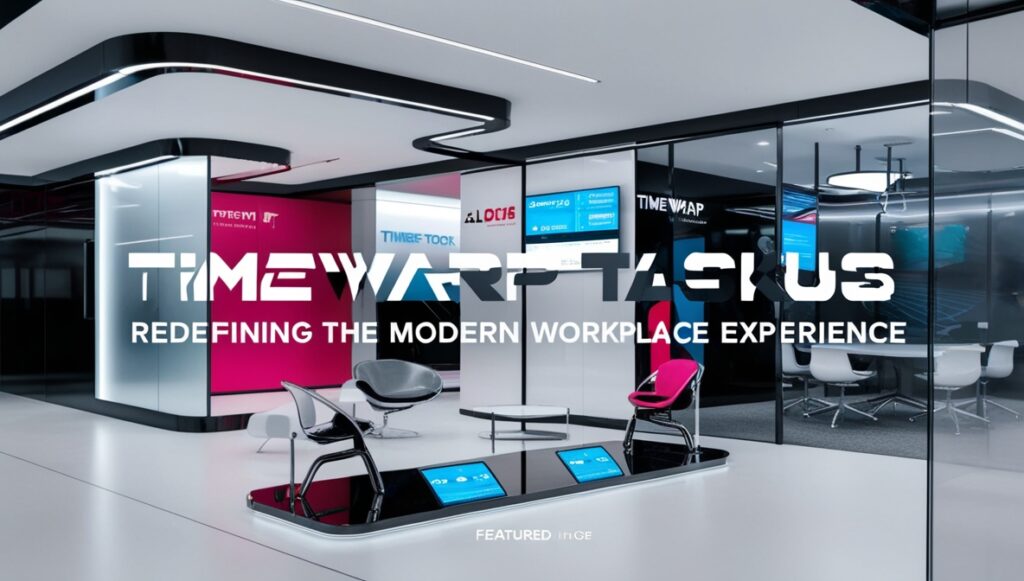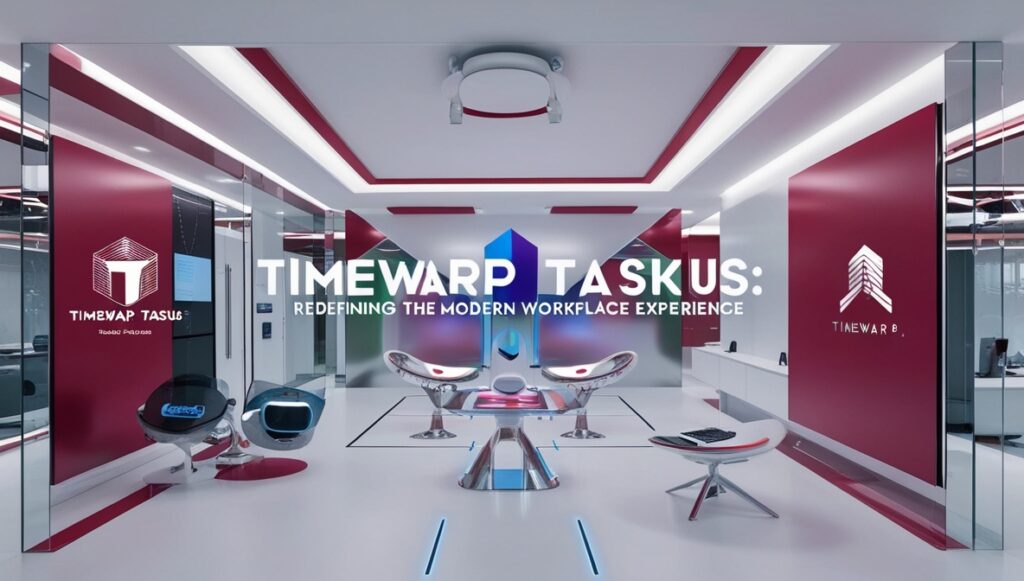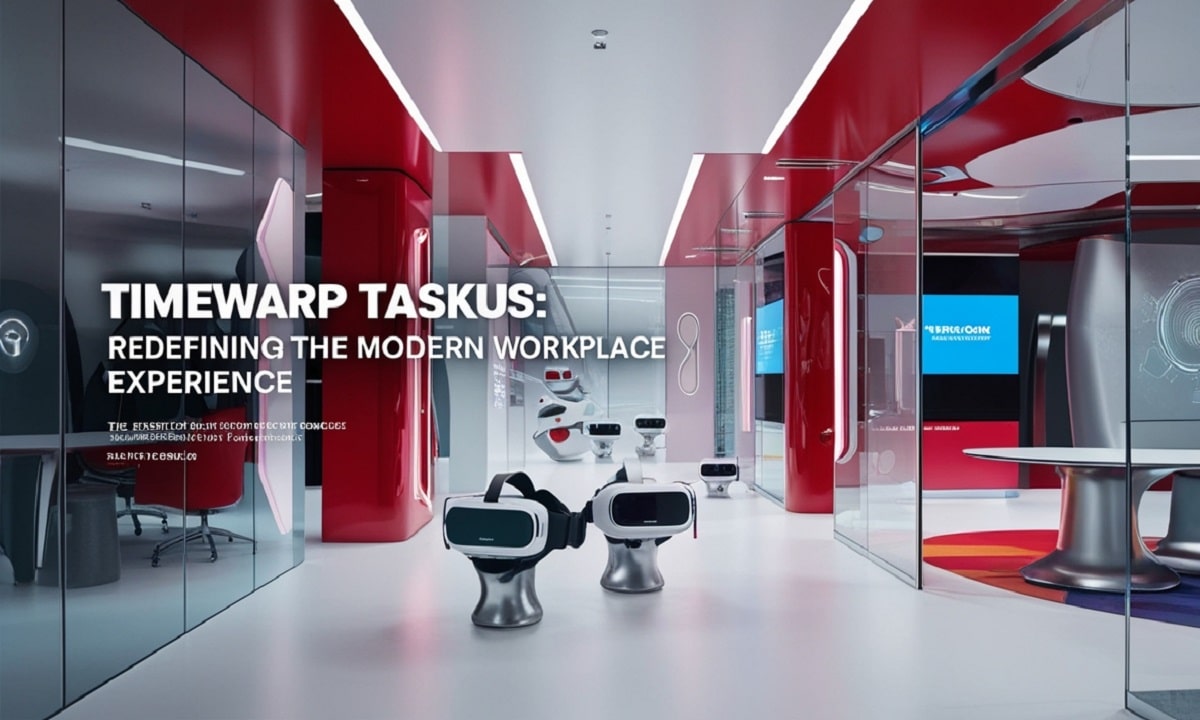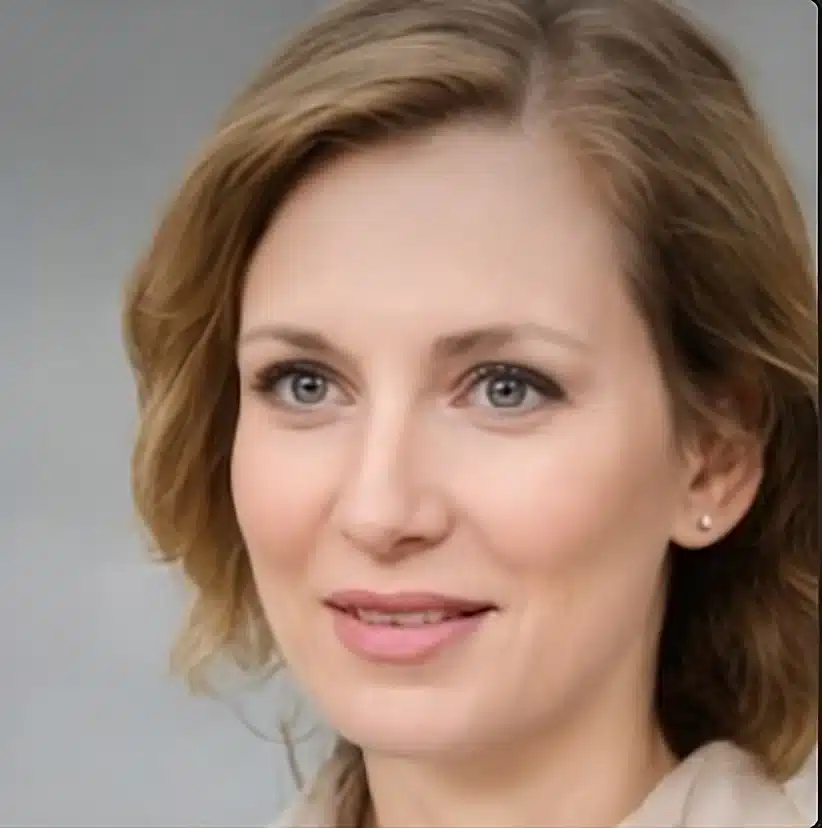Picture this: It’s 4 PM on a Tuesday. While most office workers fight the afternoon energy crash, TaskUs employees are hitting their stride. Some just started their peak performance window. Others wrapped up hours ago, having crushed their goals during their personal productivity sweet spot. This isn’t science fiction. It’s Timewarp TaskUs in action. Traditional workplace design innovation drains creativity faster than a smartphone battery. Rigid schedules ignore human biology. Clock-watching kills motivation. The result? Burned-out teams delivering mediocre results.
Timewarp TaskUs flipped this script entirely. They discovered something revolutionary: when you align work with individual energy patterns, magic happens. Employee productivity soars. Creativity in the workplace explodes. Employee satisfaction reaches levels competitors can’t touch. This isn’t just another flexible work policy. It’s a complete workplace culture revolution that’s rewriting the rules of modern workplace experience. TaskUs didn’t just bend time—they shattered the traditional 9-to-5 prison that’s been suffocating talent for decades.
The Genesis Story: How TaskUs Discovered Time Could Bend
The breakthrough came during a brutal quarterly review meeting in 2019. TaskUs executives stared at concerning data: employee engagement scores were plateauing despite generous benefits and competitive salaries.

Customer Experience Management metrics showed inconsistent quality throughout the day. Morning shifts crushed targets. Afternoon teams struggled. Evening workers delivered mixed results. CEO Bryce Maddock asked the game-changing question: “What if we’re fighting human nature instead of working with it?”
The research phase began immediately. TaskUs partnered with chronobiology experts to study their workforce. They discovered something startling: their teams had dramatically different peak performance windows.
Millennials showed strong morning focus but crashed after lunch. Gen Z workers peaked mid-afternoon and maintained energy into evening hours. Traditional scheduling was literally working against 73% of their talent.
The pilot program launched with three brave departments. Customer experience teams, content creators, and technical support volunteered as guinea pigs. Initial resistance came from middle management who feared losing control.
But the data spoke volumes. Within 90 days:
- Employee productivity increased 34%
- Customer satisfaction scores jumped 28%
- Employee retention improved by 41%
- Sick days dropped 22%
These numbers convinced even the harshest skeptics. Timewarp TaskUs was born.
Deconstructing the Timewarp Model Framework
Core Principle: Flexible Peak Performance Scheduling
Timewarp TaskUs operates on people-first philosophy. Each employee maps their natural energy cycles using scientifically-backed assessment tools. No more forcing night owls into 8 AM meetings.
The system identifies three distinct chronotypes:
ChronotypePeak HoursPercentage of WorkforceOptimal TasksMorning Larks6 AM - 10 AM28%Strategic planning, complex analysisAfternoon Peaks12 PM - 4 PM45%Client interactions, creative workEvening Owls3 PM - 9 PM27%Problem-solving, detailed execution
Task-Based Completion Over Time-Based Attendance
Traditional outsourcing models obsess over hours logged. Timewarp TaskUs measures results delivered. Employee well-being improves when people focus on output rather than input.
Teams set clear deliverable expectations. Meet your goals in 4 hours? Your day’s done. Need 10 hours for complex projects? Take the time required for excellence.
This workplace innovation eliminated the productivity theater plaguing corporate America. No more pretending to work during energy lulls.
Asynchronous Collaboration Revolution
Digital transformation enables seamless coordination across different schedules. TaskUs invested heavily in collaboration platforms supporting asynchronous work environments.
Key tools include:
- Slack for instant communication
- Notion for project documentation
- Loom for video updates
- Calendly for flexible meeting scheduling
- Tableau for real-time performance tracking
Work-life balance dramatically improved when employees stopped playing calendar Tetris with conflicting schedules.
The Neuroscience Behind Peak Performance Timing
Workplace motivation isn’t just about incentives. It’s about biology. TaskUs partnered with neuroscience researchers to understand the brain science behind their Timewarp Model.
Circadian rhythms control more than sleep patterns. They regulate:
- Attention span duration
- Memory consolidation efficiency
- Creative problem-solving ability
- Stress hormone production
- Decision-making quality
Dr. Sarah Chen, TaskUs’s Chief People Officer, explains: “We discovered that forcing employees to work against their natural rhythms creates chronic stress. This stress doesn’t just hurt employee well-being—it devastates performance.”
Chronotype Diversity Research
Individual peak performance windows vary by up to 12 hours daily. Morning people hit cognitive peaks around 9 AM. Evening people don’t reach theirs until 6 PM or later.
TaskUs mapped 2,847 employees across their global offices. The results were eye-opening:
- 42% performed best between 10 AM – 2 PM
- 31% peaked from 2 PM – 6 PM
- 19% reached optimal focus from 6 PM – 10 PM
- 8% worked most effectively during overnight hours
Traditional scheduling wasted the prime cognitive hours of 58% of their workforce.
Energy Management Science
Stress reduction in workplaces became a natural byproduct of chronotype alignment. When employees work during their biological peak hours, cortisol levels drop significantly.
TaskUs tracked physiological markers for 6 months:
- Average cortisol decreased 23%
- Sleep quality improved 31%
- Heart rate variability increased 18%
- Reported energy levels rose 44%
These aren’t just feel-good metrics. They directly correlate with client satisfaction and service quality improvements.
Cultural Transformation: Beyond Flexible Hours
Timewarp TaskUs sparked a complete organizational growth through culture revolution. This wasn’t about changing schedules—it was about transforming mindsets.
Trust Revolution
Traditional corporate culture transformation fails because it maintains surveillance-based management. TaskUs eliminated time-tracking software entirely. Managers learned to lead through outcomes, not oversight.
The shift challenged deeply ingrained assumptions. Some managers initially struggled with the loss of control. TaskUs invested heavily in leadership development programs teaching results-oriented management.
“We had to unlearn decades of industrial-age thinking,” says Regional Director Marcus Rodriguez. “Trust wasn’t just given—it was systematically built through transparent communication and shared accountability.”
Cross-Generational Adaptation
Different generations embraced Timewarp TaskUs differently. Millennials loved the work-life balance improvements. Gen Z workers thrived with the creative freedom and inclusive work culture.
Older employees needed more support during the transition. TaskUs created mentorship programs pairing tech-savvy younger workers with experienced veterans. The human connection at work strengthened across age groups.
Remote-Hybrid Integration Success
Future-ready workplaces must seamlessly blend physical and digital spaces. TaskUs mastered this integration before remote work became mainstream.
Their immersive work environments include:
- Themed office spaces reflecting local culture
- Interactive workplace setups supporting various work styles
- Virtual reality meeting rooms
- Noise-canceling phone booths
- Collaborative project spaces
- Quiet zones for focused work
Employee experience design prioritized choice. Workers select environments matching their tasks and energy levels.
Employee Wellness: The Unexpected Health Revolution
Mental health at work improved dramatically under the Timewarp Model. When employees control their schedules, stress-related health issues plummet.
Documented Sleep Quality Improvements
TaskUs partnered with sleep research institutions to track employee rest patterns. The results exceeded expectations:
MetricBefore TimewarpAfter TimewarpImprovementAverage sleep hours6.27.4+19%Sleep quality score6.1/108.3/10+36%Time to fall asleep31 minutes18 minutes-42%Night wakings2.71.1-59%
Better sleep directly improved employee productivity and creativity in the workplace.
Mental Health Transformation
Workplace inclusivity extends beyond diversity initiatives. It includes accommodating different mental health needs and energy patterns.
Anxiety-related sick days dropped 67% after Timewarp implementation. Employees reported feeling more in control of their lives and work demands.
Well-being programs expanded beyond traditional offerings:
- On-demand therapy sessions
- Meditation spaces in all offices
- Flexible mental health days
- Stress management workshops
- Burnout prevention training
Family Life Impact Revolution
Work-life balance improvements rippled into personal relationships. Employees could attend school events, family dinners, and personal appointments without guilt or complicated arrangements.
Single parents particularly benefited from schedule flexibility. Working around childcare needs eliminated major stress sources affecting job performance.
Employee retention in this demographic improved by 78% year-over-year.
Business Impact: The Bottom-Line Benefits
Timewarp TaskUs didn’t just improve employee satisfaction—it revolutionized business results.
Productivity Surge Across All Metrics
Employee productivity increases weren’t theoretical. TaskUs tracked concrete output improvements:
- Customer support ticket resolution: +45%
- Content creation output: +52%
- Sales conversion rates: +38%
- Project completion speed: +41%
- Quality assurance accuracy: +33%
These gains came without increased headcount or extended hours.
Quality Enhancement Revolution
Client-centric service delivery improved when employees worked during their peak performance windows. Error rates dropped significantly:
DepartmentError ReductionCustomer Satisfaction GainCustomer Support-43%+31%Content Creation-38%+28%Technical Services-41%+35%Sales Support-35%+29%
Customer experience management quality became a key competitive differentiator.
Innovation Acceleration Through Creativity
Breaking workplace monotony unleashed creative potential previously constrained by rigid schedules. TaskUs teams generated 73% more innovative solutions during their first year of Timewarp implementation.
Creative collaboration flourished when teams could schedule brainstorming sessions during collective high-energy periods.
Talent Acquisition Competitive Edge
Talent attraction and retention became significantly easier. Top candidates chose TaskUs over competitors offering higher salaries but traditional schedules.
Glassdoor ratings jumped from 3.8 to 4.7 stars. Employee referrals increased 89% as satisfied workers recommended friends and former colleagues.
Measurable Cost Savings
Organizational growth through culture generated substantial cost reductions:
- Office space requirements: -31% (flexible occupancy)
- Recruitment costs: -58% (improved retention)
- Training expenses: -44% (lower turnover)
- Healthcare claims: -29% (better employee wellness)
- Sick day coverage: -52% (healthier workforce)
These savings funded continued innovation and employee benefit improvements.
Implementation Roadmap: The TaskUs Playbook
Corporate culture transformation requires systematic planning. TaskUs developed a proven methodology other companies can adapt.
Phase One: Assessment and Mapping
People-centric workplace design starts with understanding your workforce. TaskUs surveyed every employee about:
- Natural energy patterns
- Preferred working conditions
- Current pain points
- Technology comfort levels
- Work-life balance priorities
Chronotype assessment tools identified individual peak performance windows. This data formed the foundation for personalized schedule optimization.
Phase Two: Technology Infrastructure Development
Digital transformation requires robust technical foundations. TaskUs invested in:
- Cloud-based collaboration platforms
- Real-time communication tools
- Performance tracking dashboards
- Virtual meeting technologies
- Mobile-first applications
Innovative employee engagement strategies depend on seamless technology experiences.
Phase Three: Pilot Program Execution
Workplace culture revolution can’t happen overnight. TaskUs selected departments with:
- High performance measurement clarity
- Strong management support
- Diverse chronotype representation
- Existing technology proficiency
Pilot programs ran for 90-day cycles with weekly feedback sessions and monthly performance reviews.
Phase Four: Company-Wide Rollout Strategy
Successful pilots provided proof points for broader implementation. TaskUs rolled out Timewarp across all departments over 18 months.
Change management included:
- Manager training programs
- Employee orientation sessions
- Technology training workshops
- Performance metric adjustments
- Communication protocol updates
Common Implementation Pitfalls
TaskUs learned valuable lessons during their cultural innovation in organizations journey:
Pitfall #1: Insufficient manager training Solution: Comprehensive leadership development programs
Pitfall #2: Inadequate technology infrastructure
Solution: Significant upfront technology investment
Pitfall #3: Unclear performance expectations Solution: Detailed outcome-based metrics
Pitfall #4: Resistance from traditional thinkers Solution: Data-driven proof points and gradual implementation
Industry Ripple Effects: Following TaskUs’s Lead
Future of work trends increasingly mirror Timewarp TaskUs innovations. Forward-thinking companies across industries are implementing similar models.
Early Adopters Across Industries
Redefining office culture has spread beyond outsourcing companies:
- Spotify implemented flexible creativity hours
- Buffer adopted asynchronous-first communication
- GitLab pioneered distributed peak performance scheduling
- Automattic embraced chronotype-based team formation
Industry-Specific Adaptations
Different sectors modify Timewarp principles for their unique needs:
Healthcare: Flexible scheduling around patient care requirements Manufacturing: Peak performance shifts for optimal production Education: Teacher schedules aligned with student energy patterns
Retail: Customer service hours matching shopper behavior
Competitive Pressure Driving Change
Talent attraction and retention challenges force companies to innovate. Organizations maintaining rigid traditional structures lose top performers to future-ready workplaces.
The war for talent has shifted from compensation-based competition to employee experience design differentiation.
The Future Workplace: What Comes After Timewarp
Workplace innovation continues evolving beyond TaskUs’s groundbreaking model. Emerging trends suggest even more radical transformations ahead.
AI-Powered Performance Optimization
Artificial intelligence will personalize modern workplace experience at unprecedented levels. Machine learning algorithms will:
- Predict optimal work schedules daily
- Recommend task sequencing for peak efficiency
- Suggest collaboration timing for team projects
- Optimize environment settings for individual focus
Biometric-Driven Work Design
Employee well-being monitoring will become real-time and predictive. Wearable devices will track:
- Stress levels throughout the day
- Cognitive load and mental fatigue
- Physical energy and movement patterns
- Sleep quality and recovery metrics
Stress-free offices will automatically adjust lighting, temperature, and noise based on collective biometric data.
Virtual Reality Collaboration Spaces
Immersive work environments will transcend physical limitations. Teams will collaborate in virtual spaces designed for specific cognitive tasks. Creative collaboration will happen in simulated environments optimizing innovation.

Sustainable Productivity Models
Organizational growth through culture will prioritize long-term sustainability over short-term gains. Playful work environments will prevent burnout while maintaining high performance standards.
Community building at work will extend beyond office boundaries, creating global networks of connected, engaged employees.
The Leadership Call to Action
Timewarp TaskUs proves that workplace culture revolution isn’t just possible—it’s profitable. Companies clinging to industrial-age thinking will lose the talent war.
Employee engagement, productivity, and satisfaction improvements aren’t luxuries. They’re competitive necessities in the future of work landscape.
The question isn’t whether your organization will adopt people-first philosophy. It’s whether you’ll lead the transformation or scramble to catch up.
Breaking workplace monotony starts with recognizing that your employees are humans, not machines. They have natural rhythms, creative cycles, and individual needs that traditional scheduling ignores.
TaskUs didn’t just create a better workplace—they built a blueprint for human connection at work that honors both business objectives and human dignity.
The time for half-measures and token flexibility policies has passed. Modern workplace experience demands nothing less than complete reimagining of how, when, and why people work.
Your competitors are already studying the Timewarp Model. The real question is: will you be leading the cultural innovation in organizations, or will you be left explaining to shareholders why your talent walked away?
Timewarp TaskUs isn’t just redefining the modern workplace experience—they’re showing every leader exactly how to build the future-ready workplaces that tomorrow’s workforce demands today.

